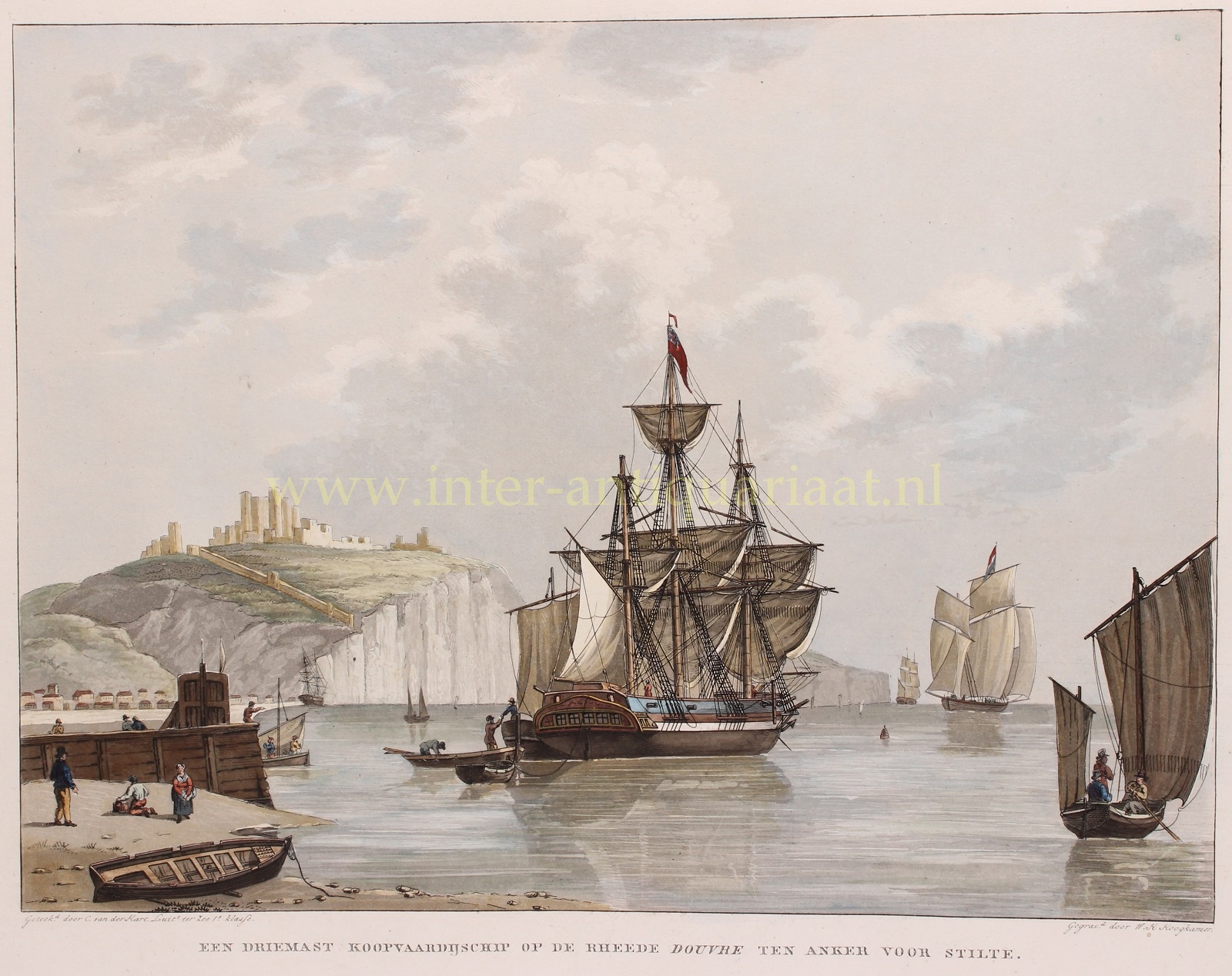“Een driemast koopvaardijschip op de rheede Douvre ten anker voor stilte.” [A three-masted merchant ship anchoring in still air on the Dover roadstead] etching with aquatint made around 1830 by Willem Hendrik Hoogkamer (1790-1864) after a drawing by Christoffel van der Hart. Coloured by a later hand. Size: ca. 31 x 39 cm.
Trade between England and the Netherlands in the first half of the 19th century was based on a wide range of goods, including textiles, grain, wood, wine and coffee.
Most English merchants did business with Amsterdam and Rotterdam, where they increasingly settled and opened trading offices. Dutch merchant ships regularly sailed to the ports of London, Hull and Liverpool. Most of the ships were sailing ships and had a cargo capacity of between 100 and 500 tonnes. The crew usually consisted of about 10 to 30 men, depending on the size of the ship.
The Dutch government supported the merchant shipping industry to England through subsidies and tax breaks, making it attractive for Dutch ship owners to sail to England. Protective legislation was also put in place, such as the Dutch 1813 Maritime Crew Act, which regulated the requirements ships’ crews had to meet.
The design for this etching was made by Christoffel van der Hart, Lieutenant at Sea 1st class in the Dutch Navy. He served on several ships, including the frigates “Zr.Ms. Prins van Oranje” and “Zr.Ms. Rotterdam”. Van der Hart was involved in the Belgian Revolution of 1830, when the southern provinces of the United Kingdom of the Netherlands seceded and formed the independent state of Belgium.
Price: Euro 425,-


